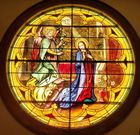About the Church
History of the Church
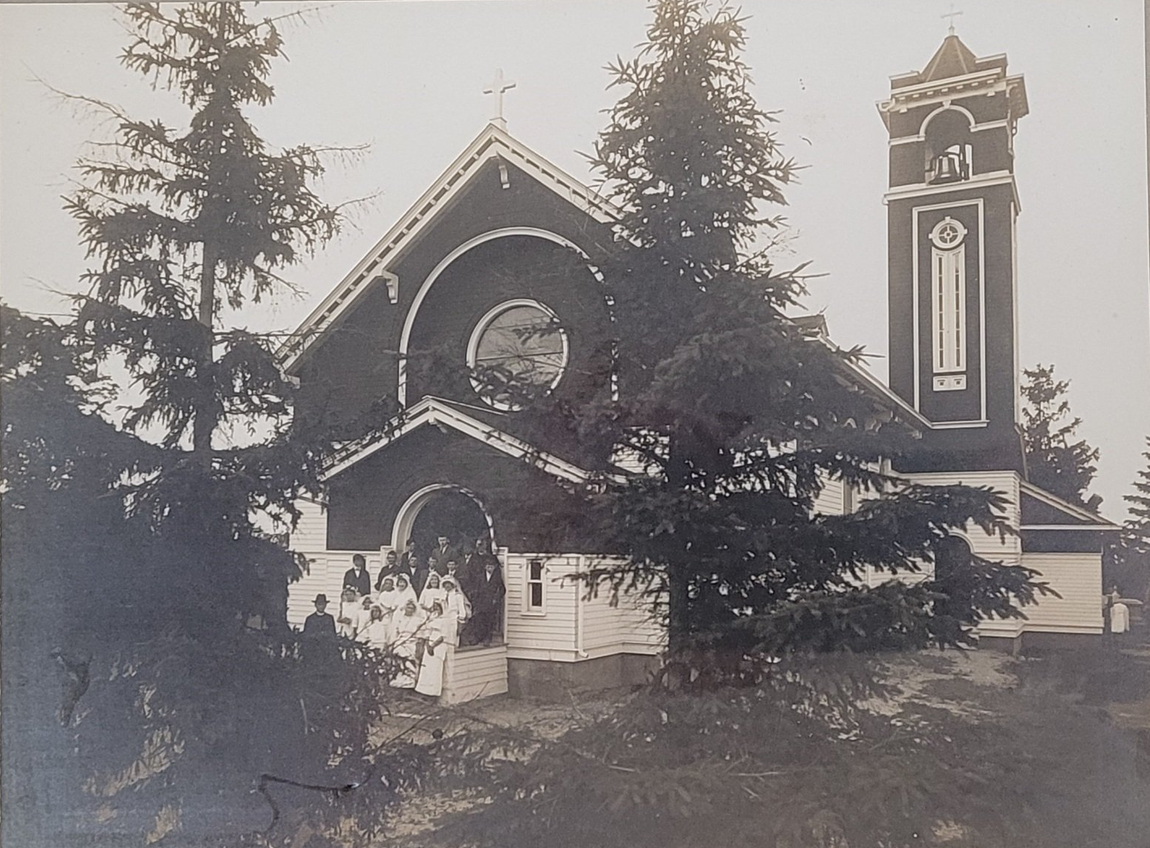
The history of the church is really a history of the early settlers of the area. After the Indian treaties of 1851 and the construction of the Dodd Military Road in 1853-54, a growing number of settlers, most of them of Irish blood, began to take up claims in Webster Township. Most of these, either from the eastern states or from Ireland itself, came by way of river boats down the Ohio or from New Orleans to St. Louis, then up the Mississippi to Hastings’ Landing or to St. Paul. Those who could afford it purchased an ox cart and followed the narrow overland trails from Hastings or traveled the Dodd Road from St. Paul.
A half dozen settlers arrived during the year 1855. This number increased to nearly twenty-five new families in 1856 and twelve additional families the year after. From then on, three or four additional families arrived each year. The first Mass was held in James McCabe’s log home, the largest in the area, in 1858.
Not only did these pioneers continue the traditions of the Faith which they had brought here – such as the practice of morning and night prayers, the Angelus and the Rosary – but they began to meet regularly, especially on Sundays, for religious services together. Prayer meetings were held in the homes of various pioneers. They began at the home of Timothy Gleason and Peter Maas to the north along Chub Creek and expanded to include James McCabe’s home near the center of the settlement. South of Hazelwood Michael King and his son John, and James Finn held services, and southeast, Simon’s, Blesener’s, Winter’s and Michael Hendricks’ held services. The favorite leader of these devotions was a deeply religious man who recited the prayers or Rosary with simplicity, fervor and dignity. This was John Gleason, often referred to as “Father John.” At the Winter’s home, the Rosary was recited in German, while the other prayers – sometimes even the Epistle and Gospel of the day – were read in English from a book.
These services, conducted by the ever-increasing number of new families, gave to everyone a sense of strength, unity, and cordiality. They also generated a sense of urgent need for a central place of worship - a church - with hopes that a priest might arrive and form a parish. The first church was built in 1862. That was also the year of the first burial in the cemetery. The simple rectangular building was expanded in 1874 and a bell tower was constructed ten years later. It was 1903 before all of the original, simple bench pews and wooden altar were replaced and the building was remodeled.
Tragedy befell the church in 1913 in the form of a July lightening strike. (Photo) The church burned to the ground and all that remained was the bell from the tower. The parishioners, coming from hearty pioneer stock, held Mass across the road at the parish hall building as a new church was constructed. It was finished a year later and included a new bell tower. Inscribed on the church bell are the words, “For the Glory of God and His Blessed Mother.” The church was added to the National Register of Historic Places in 1982.
*********************
Having been blessed with documentation of the first pioneers to the area, there is a rich history of people and their faith. Fortunately for the Parish of the Annunciation of Hazelwood, a young man by the name of John King, son of one of the pioneer settlers, kept some valuable notes and records referring to the origin and early history of this historic settlement which the authors, Bill and Jean Soderlund, were able to use in their research.
A detailed history of the church and the Hazelwood area can be found in the 1975 booklet
The History of Annunciation Church of Hazelwood, Minnesota by Msgr. Arthur H. Durand, Pastor.
Additionally, there is a timeline of historic events in the history of the church available.
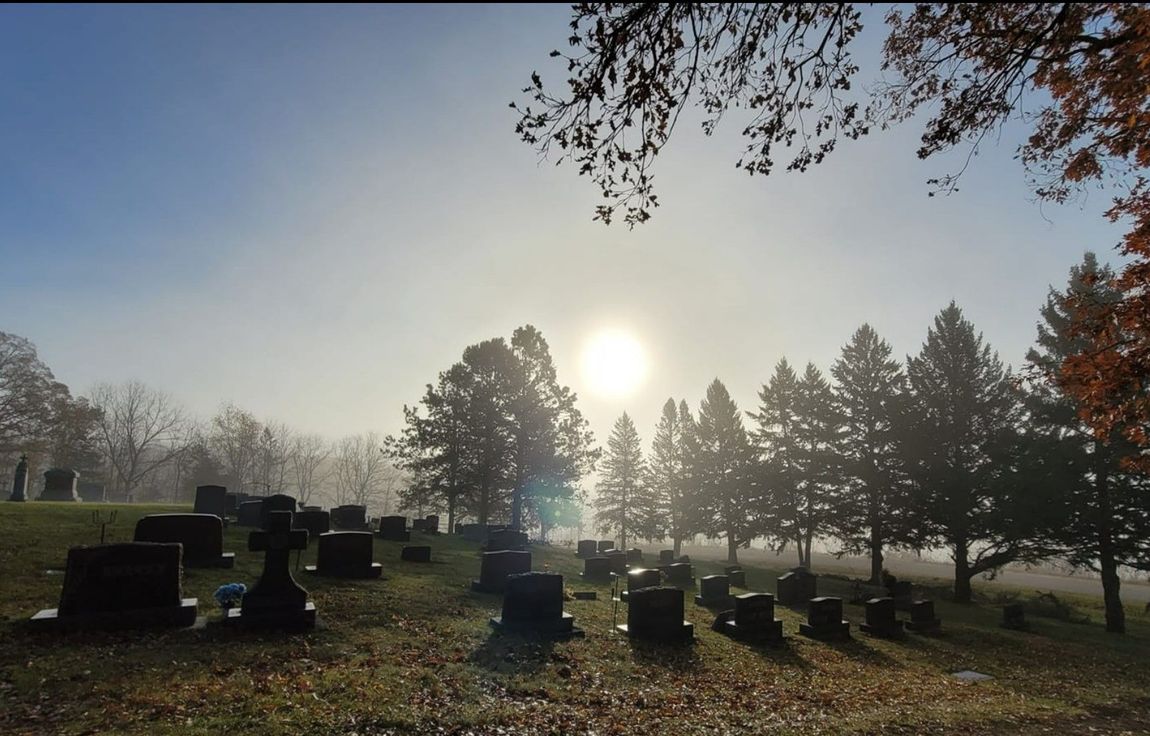
Church of the Annunciation Cemetery
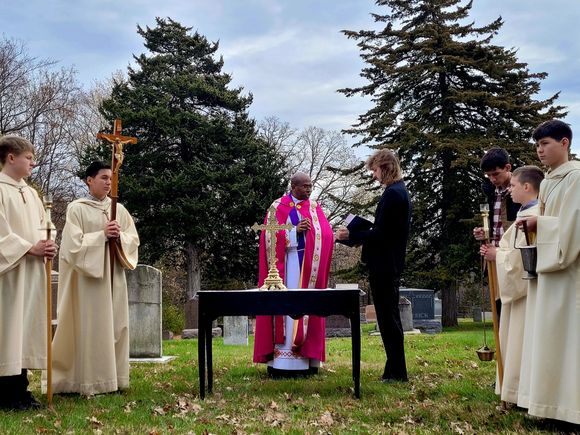
The first burial in the current cemetery was for Margaret Gleason in 1862. The cemetery has been in continuous use since that time.
List of Burials (up to about 2010)
For genealogical information related to burials in the cemetery, contact the Archdiocese of St. Paul and Minneapolis.
Additional information may be found at the Rice County Historical Society.
Parish Staff
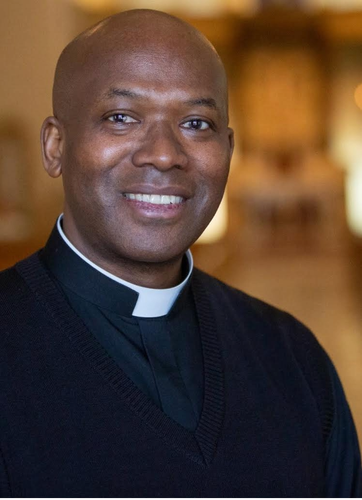
Fr. Justus Musinguzi - Parochial Administrator
Fr.Justus@annunciationchurch-hazelwood.org
Jennifer Malecha - Office Coordinator, Safe Environment Coordinator
(For information on the Safe Environment Program or Standards,
see the Archdiocese of St. Paul and Minneapolis website.)
To contact a priest, please call the St. Dominic Parish office at 507-645-8816
Email Fr.Justus@annunciationchurch-hazelwood.org
Office number 952-652-2625
